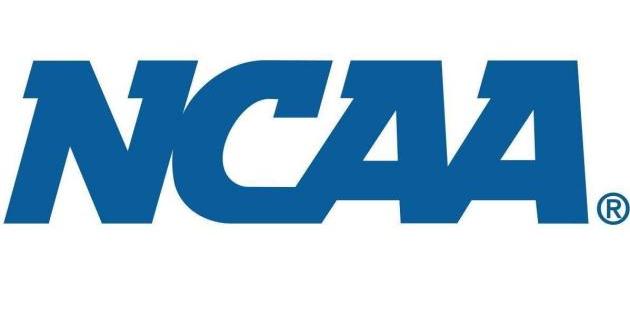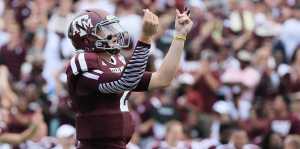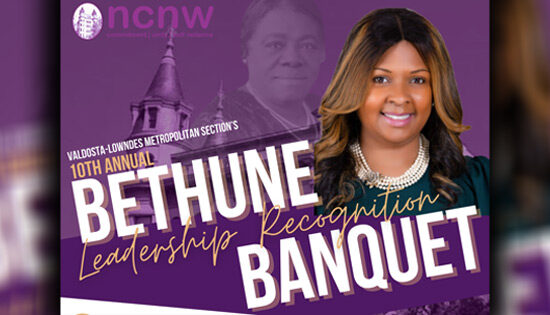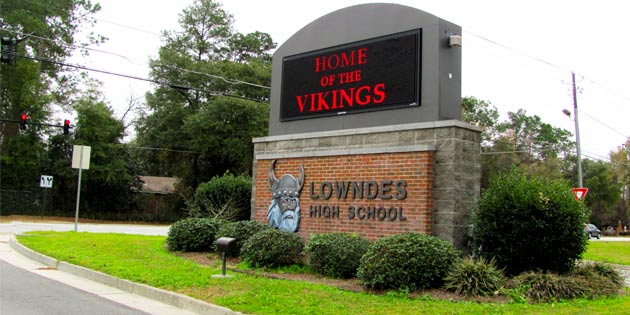 S.E. (Chip) Harp, Valdosta Today Editor:
S.E. (Chip) Harp, Valdosta Today Editor:
The recent story involving Todd Gurley, the University of Georgia running back embroiled in a memorabilia peddling controversy, once again raises questions about the current system used by the National Collegiate Athletic Association and their member schools to police college athletes.
These schools and the NCAA make tens of millions of dollars off the performance (and even likenesses) of these athletes. At the same time, however, these same athletes are forbidden from earning any outside income related to their talents. Such a total prohibition on the one hand while millions of dollars are being raked in on the other comes across as hypocritical in the very least.
First, we will all agree there has to be rules involving these athletes. You also need an organization to police over-eager boosters who want to “be involved” in the school’s program. However, should you also totally forbid these athletes from any income? Is there a way to offset their need to earn “walking around money” versus those who totally corrupt the entire system?
Gurley is accused of selling his autograph for from $8 to $25 each to memorabilia brokers. There are rules against that. Every athlete is made aware of those rules, so Gurley had to know that he was breaking NCAA regulations and putting his opportunity to play in jeopardy. His open ended suspension (at least as of press time) for such a measly sum seems somewhat draconian under any application of the rule.
 Take, for example, Heisman Trophy-winning quarterback Johnny Manziel. Last year Manziel was caught up in a similar controversy when a disgruntled broker showed photos of Manziel signing memorabilia. Reports surfaced of thousands of dollars in earnings by Manziel for these sessions. However, when all was said and done, his punishment was not missing the season or even a game. He was penalized by sitting out one-half of one game. While there was no evidence of money changing hands—whatever “evidence” existing was circumstantial—everyone seemed to agree something had transpired outside of NCAA rules.
Take, for example, Heisman Trophy-winning quarterback Johnny Manziel. Last year Manziel was caught up in a similar controversy when a disgruntled broker showed photos of Manziel signing memorabilia. Reports surfaced of thousands of dollars in earnings by Manziel for these sessions. However, when all was said and done, his punishment was not missing the season or even a game. He was penalized by sitting out one-half of one game. While there was no evidence of money changing hands—whatever “evidence” existing was circumstantial—everyone seemed to agree something had transpired outside of NCAA rules.
Maybe the best way to avoid such disparities in enforcing the prohibition is to review the rule itself and whether or not it can even be enforced in a firm, fair and consistent manner. On ESPN’s popular College Game Day this past Saturday, the commentators, most former college standouts themselves, noted that autographs from well-known college athletes are plentiful and available over the internet. They are not signing these trinkets for free, either.
Why would all of these athletes risk their college career for these few dollars? First, the risk of getting caught seems small. But the reward is also small. None of these athletes are making “big money”. They just want that “walking around” money; those few dollars that most students with jobs have.
Maybe capping the income they are allowed to earn rather than banning it altogether is a better approach. For example, if you allowed these athletes the chance to receive, say a stipend of $1000 per month, would that take away the need to sell his or her autograph to these brokers? For most it should. Then the athletes could focus on their education (and athletic) careers and not on finding money to bide them over until they leave school.
The flip side, and the position many would take that these are “student-athletes” and paying them would be wrong. They shouldn’t be making money from their career until they turn “pro”. Well, here’s a newsflash: some people are making a lot from these athletes already and I’m not talking about these trinket brokers. It’s a massive business called big-time college athletics.
Take any top-level school involved in NCAA football or basketball. Those programs pump millions and millions of dollars into these schools. Take Florida State University in Tallahassee. The impact football money has made on the campus in new buildings and an improved campus is obvious. It is fine for the schools to make this money off the efforts and likenesses of their student-athletes, but totally taboo for the athletes themselves to earn anything from their own effort outside of their scholarship.
Or is it?
Breaking the rules can never be condoned. Maybe, however, in the context of scholarship student athletes and outside income it’s time to examine the equities involved. This would require looking at where the real money has been going: the universities and their governing body, the NCAA. Examining the needs of the athletes would also be required.
Maybe if they had thought a bit more about the welfare of these students instead of owning them and making money from their efforts Todd Gurley would still be in uniform and Johnny Manziel might still be playing for Texas A&M.
Let’s get rid of the hypocrisy and call these programs what they are: massive money machines for the institutions and the NCAA. Once that is acknowledged, we can make some headway on crafting rules that balance all the interests of the student athletes, the institutions and the fans.
[wpsr_socialbts]










